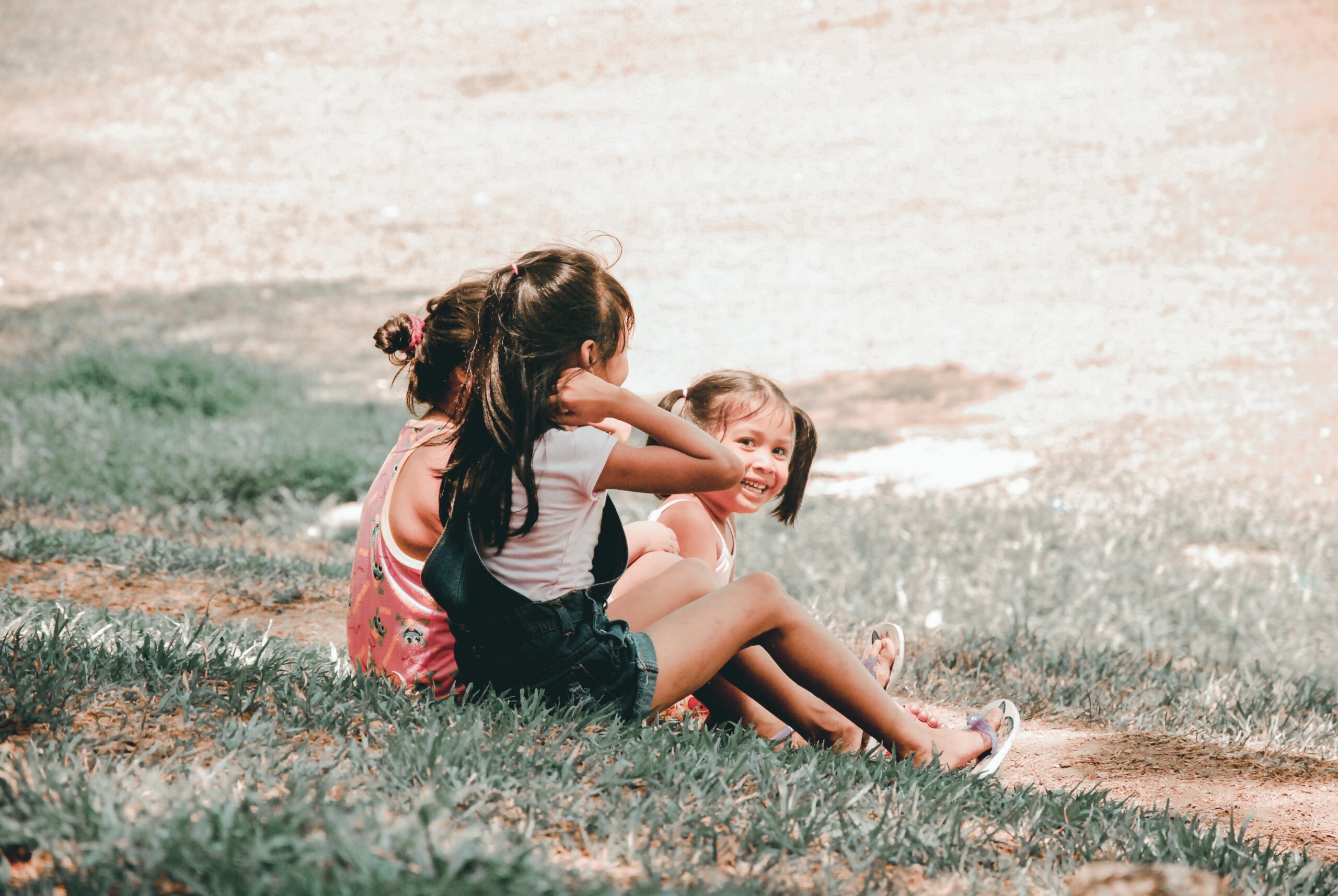
Traveling with young children can be an adventure in itself, especially when tantrums strike. It’s not uncommon for kids under the age of 5 to throw a tantrum when faced with the unpredictability and unfamiliarity of being on the go. Whether you’re embarking on a road trip or taking a plane ride, knowing how to handle these meltdowns can make the journey a little smoother for everyone involved. In this article, we’ll explore some practical tips and strategies to help you manage tantrums with kids under 5 during travel, ensuring a more enjoyable and stress-free experience for the entire family.

This image is property of images.unsplash.com.
Setting Expectations and Preparing Ahead
Explaining the trip and setting expectations
When preparing for a trip with your child, it’s important to set clear expectations and explain the purpose of the journey. Talk to your child about where you’re going, why you’re going there, and what they can expect during the trip. This will help them understand what to anticipate, reducing anxiety and uncertainty. Use age-appropriate language and involve them in the planning process as much as possible, making them feel involved and excited about the upcoming adventure.
Preparing the child for the journey
To ensure a smoother travel experience, it’s essential to prepare your child for the journey ahead. Start by discussing the means of transportation you’ll be using and what they can expect during the journey. For example, if you’re going on a long car ride, explain that they will be sitting in their car seat for a certain amount of time. Discuss any safety rules they need to follow, such as wearing a seatbelt or using headphones during plane rides. By involving your child in these preparations, they will feel more prepared and confident about the journey.
Packing comfort items
It’s no secret that traveling can be overwhelming and unsettling for young children. To help them feel more at ease, include comfort items in their travel bag. These can be their favorite stuffed animal, a cozy blanket, or a familiar toy that brings them comfort. Having these items nearby can offer a sense of security and familiarity during unfamiliar situations. Additionally, packing snacks and drinks that your child enjoys can also help keep them calm and content during the journey.
Choosing the Right Mode of Transportation
Considering the child’s temperament
When deciding on the mode of transportation for your trip, it’s important to consider your child’s temperament. Some children may feel more comfortable on a plane, while others may prefer a car ride. Take into account their preferences and how they typically handle long journeys. If your child tends to get restless easily or experiences motion sickness, opting for a mode of transportation that allows for frequent breaks and movement may be beneficial.
Opting for child-friendly transportation
Choosing child-friendly transportation can greatly contribute to a smoother travel experience. Look for airlines or bus companies that provide family-friendly amenities such as changing tables, extra legroom, or even entertainment options for kids. If traveling by car, consider renting a vehicle with built-in DVD players or bring along portable electronics with child-friendly content. These features can help keep your child engaged and entertained throughout the journey.
Planning for breaks and rest stops
Regardless of the mode of transportation you choose, planning for regular breaks and rest stops is crucial. Children have shorter attention spans and may become restless or irritable if confined for prolonged periods. Research ahead of time to find suitable locations along your route where you can make pit stops. These rest breaks provide an opportunity for your child to stretch their legs, use the restroom, and burn off excess energy. Taking breaks also helps break the monotony of the journey, making it more enjoyable for everyone involved.
Engaging and Distracting Techniques
Playing interactive games
Engaging your child in interactive games is a great way to keep their minds occupied and their attention diverted during the journey. Simple games like “I Spy,” where you take turns spotting items in the surroundings, or the classic “20 Questions” can be entertaining and engaging. Alternatively, you can bring along travel-sized board games or card games that are age-appropriate and easy to play on the go. These games not only provide a source of entertainment but also encourage quality bonding time between you and your child.
Carrying travel-sized toys
Having a variety of travel-sized toys can be a lifesaver during long trips. Pack a small bag or backpack with a selection of toys that your child enjoys playing with. Age-appropriate options may include mini puzzles, coloring books, stickers, or small figurines. Avoid toys with small parts that can easily get lost or become choking hazards. Introduce these toys throughout the journey to keep your child engaged and excited. Rotating the toys can also prevent boredom and maintain their interest throughout the trip.
Singing songs and rhymes
Singing songs and rhymes is an excellent way to entertain your child and distract them during the journey. Create a playlist of their favorite nursery rhymes, children’s songs, or even popular tunes that you can all sing together. You can also come up with travel-themed songs that incorporate the destination or sights you may encounter along the way. Singing not only provides entertainment but also promotes language development and bonding with your child.
Dealing with Frustration and Anxiety
Recognizing triggers and early signs
It’s important to be able to recognize the triggers and early signs of frustration and anxiety in your child during travel. These signs may include restlessness, irritability, increased crying, or changes in behavior. Pay attention to your child’s cues and intervene early to prevent meltdowns. This might involve addressing their needs, such as hunger, discomfort, or tiredness, before they escalate into frustration. Being proactive and responsive to your child’s emotions can help them feel understood and decrease their levels of anxiety.
Using calming techniques
When your child starts to feel frustrated or anxious during travel, it’s important to have a repertoire of calming techniques at your disposal. Deep breathing exercises, gentle massages, or even simple stretches can help your child relax and refocus. You can also encourage them to practice visualization by imagining a calming and pleasant scene. Incorporating these techniques into your travel routine can provide a sense of familiarity and security for your child.
Offering reassurance and comfort
During moments of frustration and anxiety, it’s crucial to provide your child with reassurance and comfort. Offer words of encouragement and remind them that you are there to support them. Use a calm and soothing tone to communicate with them, helping them feel safe and understood. Physical touch, such as hugging or holding their hand, can also provide a sense of comfort and security. Remember that your presence and availability as a caregiver can go a long way in alleviating your child’s worries and anxieties.

This image is property of images.unsplash.com.
Maintaining a Routine and Structure
Sticking to regular meal and sleep times
Children thrive on routine, and travel can disrupt their familiar schedule. To maintain a sense of normalcy and comfort, try to stick as closely as possible to their regular meal and sleep times. Pack snacks and meals that your child is accustomed to and ensure they are well-rested before embarking on the journey. Consistency in their daily routine can help minimize disruption and create a more stable environment for your child during travel.
Creating a familiar environment
Even in unfamiliar surroundings, you can create a sense of familiarity for your child. Bring along their own pillow, blanket, or sheet to make their sleeping arrangements feel more like home. Use familiar toiletries or bedding that carry their favorite scent. Setting up a small portable nightlight can also help create a familiar and comforting environment during nighttime. These familiar items and scents can provide a sense of security and comfort during travel.
Establishing travel-friendly rituals
Creating travel-friendly rituals can help establish a sense of predictability and comfort for your child. This can be as simple as reading a specific bedtime story or engaging in a special pre-travel routine before embarking on each leg of the journey. Having these rituals in place can give your child something to look forward to and help with the transition between different settings. Travel-friendly rituals also act as anchors, providing reassurance and stability during the unpredictable nature of travel.
Positive Reinforcement and Rewards
Implementing a reward system
Positive reinforcement and rewards can be effective ways to encourage good behavior during travel. Implementing a reward system can motivate your child to exhibit desirable behaviors and make the journey more enjoyable for everyone involved. You can use a sticker chart, where your child earns stickers for each positive behavior displayed, and receive a small reward once a certain number of stickers is achieved. This encourages consistency and reinforces positive behaviors throughout the trip.
Encouraging good behavior with praise
In addition to implementing a reward system, remember to provide verbal praise and positive reinforcement for your child’s good behavior. Acknowledge and appreciate their efforts in following rules, staying calm, or showing patience. Praising specific actions and behaviors helps your child understand what is expected of them and increases the likelihood of them repeating those behaviors. Positive reinforcement is a powerful tool in shaping behavior and can go a long way in preventing tantrums during travel.
Offering small incentives
Sometimes a small incentive can work wonders in motivating your child during travel. Consider packing a few surprise toys or treats that you can offer as small rewards throughout the journey. These can be given when your child displays good behavior or reaches specific milestones, such as staying calm during a particularly challenging stretch of the trip. These incentives can serve as positive distractions and keep your child engaged and motivated, making the journey more enjoyable for everyone.

This image is property of images.unsplash.com.
Handling Meltdowns in Public Places
Remaining calm and composed
When faced with a meltdown in a public place, it’s essential to remain calm and composed. Your child is looking to you for guidance and reassurance, and staying calm sends the message that everything is under control. Take deep breaths and try to stay relaxed, even if it feels challenging in the moment. By modeling calm behavior, you can help your child regulate their emotions and eventually calm down.
Finding a quiet and safe space
If your child is experiencing a meltdown, it’s important to find a quiet and safe space where they can calm down without additional stimulation. This could be a less crowded area of the airport or a nearby park if you’re traveling by car. Remove your child from the triggering environment and find a spot where they can feel safe and secure. Offering a calm environment minimizes sensory overload and allows your child to regain control of their emotions.
Redirecting attention and offering choices
During a meltdown, redirecting your child’s attention can be an effective strategy in diffusing the situation. Engage them in a different activity or offer choices that allow them to regain a sense of control. For example, you can ask if they would like to choose a snack or decide which game to play. Offering choices empowers your child and helps divert their attention away from the trigger that caused the meltdown.
Communicating Effectively
Using simple and clear language
When communicating with your child during travel, it’s important to use simple and clear language that they can understand. Avoid using complex explanations or vocabulary that may confuse them. Instead, break down instructions or information into small, digestible parts. Use visual cues or gestures if necessary to enhance comprehension. By using language that is appropriate for their age and development, you can ensure effective communication and minimize frustration for both you and your child.
Encouraging expression of emotions
Traveling can bring up a range of emotions for your child, both positive and negative. Encourage them to express their feelings and emotions openly and without judgment. Let them know that it’s okay to feel frustrated, tired, or even excited. By creating a safe space for emotional expression, you can help your child cope with their emotions in a healthy and constructive manner.
Active listening and validation
When your child expresses their emotions or shares their experiences during travel, practice active listening and validation. Give them your full attention and show genuine interest in what they are saying. Reflecting their feelings back to them can help them feel heard and understood. For example, if your child says they are tired, you can respond with, “I can understand why you might feel tired after such a long journey.” This validation can provide comfort and reassurance, strengthening your bond with your child.
Seeking Support from Other Parents
Joining parent support groups
Feeling supported by other parents who have gone through similar travel experiences can be incredibly helpful. Consider joining parent support groups, both online and in your community, where you can connect with like-minded individuals who can offer advice and guidance. These groups provide a space for sharing experiences, asking questions, and getting valuable insights from others who have faced similar challenges. Knowing that you’re not alone in managing tantrums during travel can be reassuring and empowering.
Sharing experiences and advice
Sharing your own experiences and advice with other parents can not only be cathartic but also beneficial for others who are navigating the same journey. Offer your insights, tips, and strategies that have worked for you and your child. Through open and honest discussions, you can learn from each other’s successes and failures, ultimately improving your own approach to managing tantrums during travel.
Learning from similar situations
When seeking support from other parents, pay attention to similar situations and scenarios they have encountered. Listen to how they handled meltdowns or anxiety during travel and take note of any strategies that resonate with you. Sometimes, hearing about someone else’s success can provide inspiration and practical ideas that you can adapt to your own situation. Learning from the experiences of others can be a valuable tool in managing tantrums with kids under 5 during travel.
Professional Help and Guidance
Consulting with a pediatrician or therapist
If your child’s tantrums during travel persist and significantly impact their well-being or the overall travel experience, it may be worth consulting with a pediatrician or therapist. These professionals can provide guidance and support, addressing any underlying issues that may be contributing to your child’s challenges. They can also offer tailored strategies and techniques that are specific to your child’s needs, helping you manage tantrums in a more effective and sustainable way.
Exploring therapy options
Depending on your child’s age and individual needs, therapy options such as play therapy or cognitive-behavioral therapy may be beneficial. These therapies can help children develop coping skills, regulate their emotions, and manage anxiety and frustration. A qualified therapist can work with you and your child to identify triggers, address any underlying issues, and provide the necessary tools and strategies to navigate travel-related tantrums.
Developing coping strategies
Seeking professional help can also empower you and your child with a range of coping strategies that can be implemented during travel. These strategies may include deep breathing exercises, grounding techniques, or specific behavioral interventions. The therapist can work with you and your child to develop an individualized plan that addresses their unique needs and equips them with the skills to manage their emotions effectively.
In conclusion, managing tantrums with kids under 5 during travel requires careful planning, effective communication, and a supportive approach. Setting clear expectations, preparing your child ahead of time, and choosing child-friendly transportation are key factors in a successful journey. Engaging and distracting techniques, along with dealing with frustration and anxiety, can help prevent meltdowns and keep your child calm and content. Maintaining a routine and structure, utilizing positive reinforcement, and seeking support from other parents are valuable strategies in managing tantrums during travel. If necessary, don’t hesitate to seek professional help and guidance to develop coping strategies and address any underlying issues. With patience and preparation, you can create a positive and enjoyable travel experience for both you and your child.



